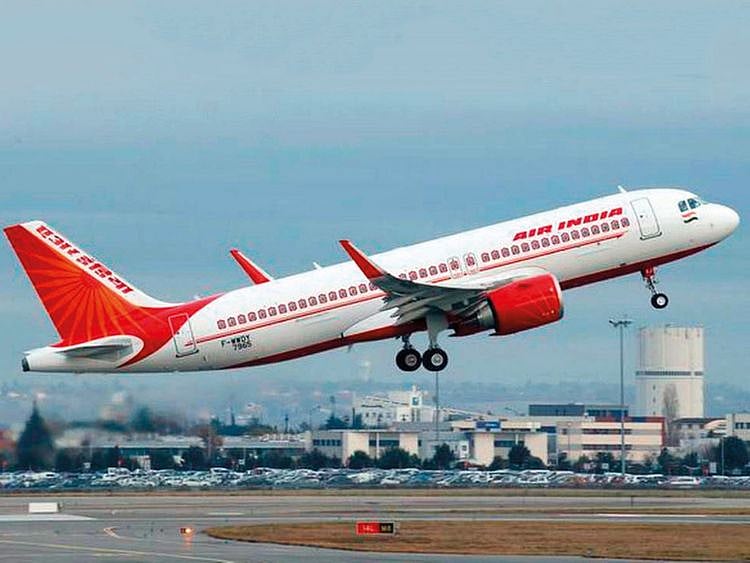What does Air India - Vistara merger mean for India-GCC airfares?
Air India, Singapore Airlines joining forces to grow aviation sector in India

While India’s aviation sector is set for a big overhaul with the merger between Air India and Vistara, it is also good news for Indians living in the GCC region. An enlarged Air India group could emerge a full-service alternative for millions of passengers who currently fly Gulf carriers such as Emirates, Etihad, Saudia and Qatar Airways.
“Indians have an affinity for Air India, and in terms of value proposition, Emirates is not far behind,” said Virendra Jain, Co-Founder and CEO of VIDEC, an advisory and analytics firm.“If a combined Air India can offer both on their full-service offerings, the GCC traveller may find it hard to choose between them.”Air India and Vistara -- both operated by Indian conglomerate Tata Group -- are set to merge soon, with Singapore Airlines holding 25.1 per cent of the merged entity with a $250 million investment.
The merger of Air India -- which suffered years of mismanagement and losses under the Indian government ownership -- in a new entity is poised to consolidate the aviation sector in the South Asian nation and reap benefits from limited expenditure on brand building, analysts say. The iconic Maharaja returned home to the Tatas earlier this year after the latter won a $2.4 billion bid.
The expanded Air India group has access to under a quarter of the domestic sector, making it the biggest carrier after IndiGo. But what would this mean for the price-conscious GCC consumer, since more than 65 per cent of Indian outbounds are serviced by international airlines?
Is the consolidation good news for the GCC consumer?
With the introduction of more players in the market, especially those as big as the consolidated Air India, airfares on the India-GCC corridor could stabilise in the long run. “The Air India- Vistara consolidation is good for its consumers,” Jain said. Airfares, especially those operating on the India-GCC corridor, are subject to demand and supply economic principles. What Air India wants right now is to increase its domestic share. The GCC consumer, however, is very demanding and price-conscious.
Jain explained, “The India-GCC airfare pricing trends should ideally return to pre-pandemic levels by the third quarter of 2023. Currently, airfares are 10- 15 per cent above pre-pandemic levels due to high demand and recovery from COVID-19-triggered restrictions.” For example, pre-pandemic airfares from UAE- Mumbai averaged Dh1,900 in peak summer (July- August). Air tickets in 2022 were well over Dh2,200 during the same time peri for the same period.
Jain said airlines have been able to get their act together since borders reopened. “The GCC-India corridor has the highest volume for outbound traffic. Moreover, airline profitability suffered during the pandemic as they had to introduce competitive refund and cancellation policies that ate into their profit margins,” he said.
Given that travel has almost returned to pre-pandemic levels, that is set to change once the merger is complete. While GCC carriers like Emirates have a good head start regarding passenger loyalty, Air India is just a little behind. “Brand loyalty and sentiment in aviation is driven by better connectivity and pricing,” Jain added.
As of September 2022, Air India and Air India Express fleets had 165 planes, and Vistara had 53 aircraft. And Air India and Air India Express service 51 domestic destinations, while Vistara connects 31 domestic destinations. Air India and Air India Express service 38 destinations in terms of international networks, whereas Vistara connects 10 destinations. Jain said, “Air India and Vistara will have a fleet of 218 aircraft together. This will make the combined entity India’s largest international carrier and a second-largest domestic carrier behind IndiGo.”
When will the merger show profits in the books?
John Grant, a Senior Analyst at OAG, said history has shown that it is tough to translate a merger into profitability; in many cases, the logistics of merging businesses can be more complex than expected. “I suspect this will certainly be the case in this (Air India – Vistara) instance. Allowing for all the necessary regulatory processes and then the joining of the two organisations, I can see this being some years before it translates into profit for the combined business; after all, neither are particularly successful at the moment,” said Grant.
Sign up for the Daily Briefing
Get the latest news and updates straight to your inbox
Network Links
GN StoreDownload our app
© Al Nisr Publishing LLC 2025. All rights reserved.